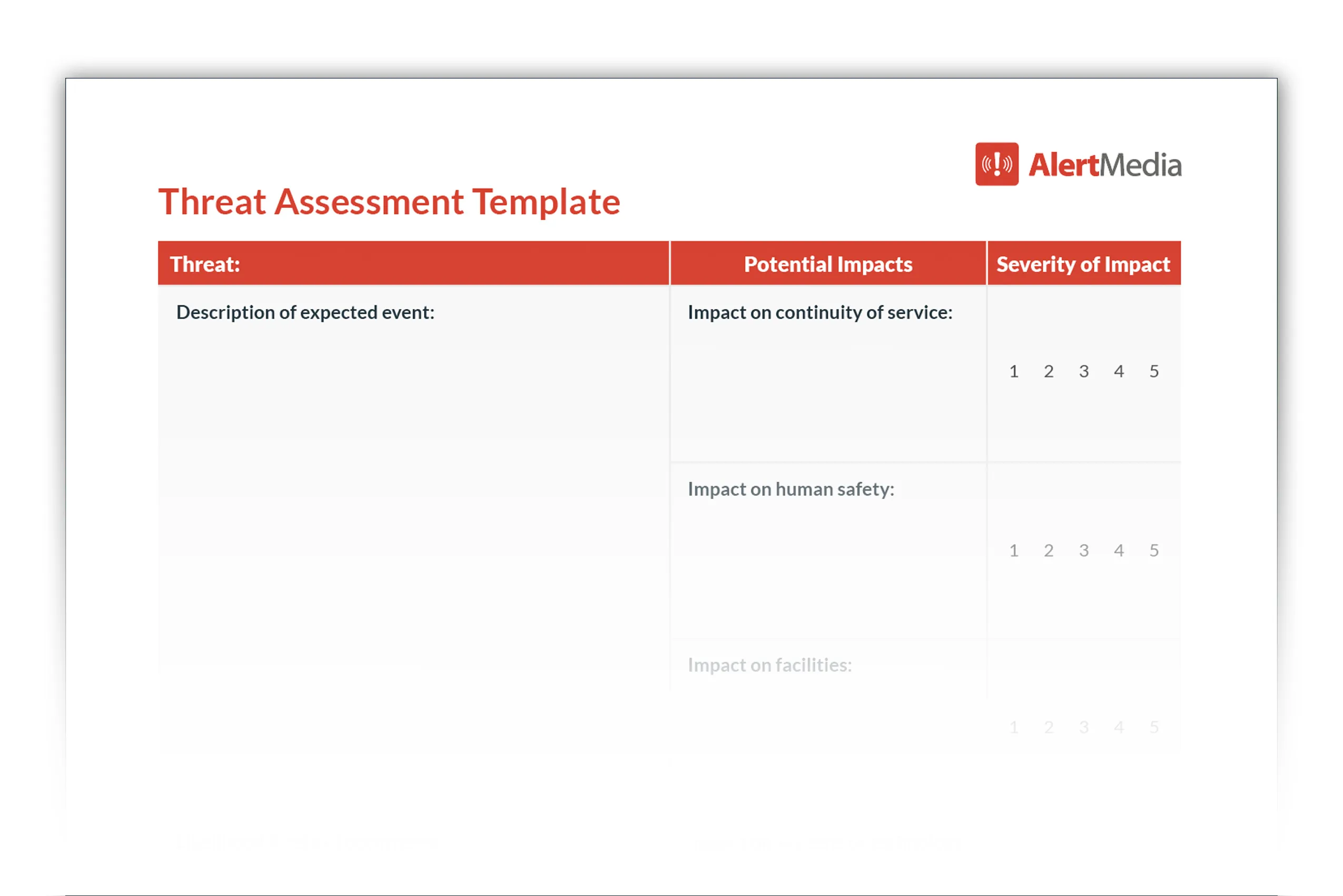
Facing Dynamic Risk Means Expecting the Unexpected
From fires and floods to cyberattacks and power outages, dynamic risk management can keep your people safe from the unexpected.

In November 2018, a massive 7.1 earthquake struck Anchorage, Alaska, followed shortly by a second earthquake almost as big. Everything changed in a matter of minutes as workers across the region grappled with sudden, unplanned disruptions to critical infrastructure. As a busy freight hub, Anchorage Airport was particularly affected.
With a line of aircraft waiting to land, the air traffic control team attempted to evacuate their crumbling control tower—only to find their backup building was also damaged. Brendan Monahan recalls the incident on a recent episode of The Employee Safety Podcast.
“Their plan is up in smoke,” says Monahan, Head of U.S. Resilience and Crisis Management for a major global pharmaceutical company. “So what do they do? They grabbed their radios, some binoculars, and they hopped in the back of a pickup truck and drove to the runway. And from there, they were able to get all the planes that were in the queue safely on the ground…”
Neither the U.S. Geological Society nor other scientists have predicted a major earthquake. Yet the air traffic control team’s ability to think—and act—on the fly allowed them to save the day literally.
The story of Anchorage underlines why understanding (and accounting for) dynamic risk is key to keeping people, assets, and operations safe in the face of new dangers.
The Cascade Effect: Emerging Trends in the Threat Landscape
What Is Dynamic Risk?
Dynamic risks are difficult to predict ahead of time. They are associated with unexpected, unknown, and rapidly changing situations. Dynamic risks often arise suddenly and without warning, such as earthquakes, explosions, or an active shooter appearing out of nowhere.
Other times, a dynamic risk emerges as a side effect or unintended consequence of a known threat. For example, warnings began a few days before Winter Storm Uri in February 2021. Families and businesses braced for low temperatures, but they weren’t prepared for the ripple effect of related dangers, which included frozen equipment, power grid outages, and gas shortages.
Human, environmental, operational, and external factors may all contribute to dynamic risk, including:
- Organizational changes
- Physical danger resulting from fatigue, stress, aggression, or emotional sensitivity
- Outbreaks of disease or infection
- Criminal activities
- Violent outbursts by employees or customers
- Active shooter incidents
- Extreme weather or natural disasters
- Geopolitical upset
- Economic shifts
- Equipment or system malfunctions
- Terrorism
- Supply chain disruptions
Any of these potential risks could arise instantly and present new dangers to your people’s health and safety and your business’s ongoing operation.
Why Should Businesses Conduct Dynamic Risk Planning?
We’re living in times of uncertainty and instability. Rising geopolitical tensions, inflation, wars, climate change, partial deglobalization, AI, and stressed supply chains are among the many concerns that could affect your organization’s well-being, productivity, and safety.
Planning ahead may seem paradoxical when the crystal ball looks cloudy and a company’s greatest exposures are off the map. But dynamic risk planning brings several benefits for both employers and individuals, such as:
- Illuminating previously unseen or unarticulated risks
- Revealing whether safety measures can be put in place to minimize the potential for damage
- Reducing fear of the unknown by strengthening workers’ ability to adapt to rapidly changing environments
- Encouraging teamwork and empowering workers to protect themselves, those around them, and their work environment
- Improving workplace safety by equipping people with skills to assess and control high-risk situations quickly
- Strengthening overall business resilience by training your organization to think on its feet in real time
What Is a Dynamic Risk Assessment?
Organizations are used to planning for known risks, like tornadoes, hurricanes, or potential break-ins. But what about the threats you can’t easily predict?
Dynamic risk management goes beyond the two-dimensional threat assessment, which grades individual risks on likelihood and severity. It also recognizes that risks are interconnected and ever-evolving. A dynamic risk assessment (DRA) is a process for identifying and handling unexpected threats and uncertainties in quickly changing situations. Instead of occurring before an event, a DRA takes place in real time as a situation unfolds.
Think back to driver’s ed for a moment. You’re taught to continually scan the road for hazards, obstacles, and potentially dangerous situations—like a tree branch blocking the road, potholes, or someone running a red light. This ongoing process of observing, analyzing, reacting, and reevaluating your surroundings is a form of dynamic risk assessment.
A DRA identifies and quantitatively measures:
- Most probable risk scenarios
- Severe but less likely scenarios
- Cumulative effects on the organization
- Most effective risk mitigation strategies based on the threats identified
- Expected risk velocity or time to impact
Preview of AlertMedia’s Threat Assessment Template
Who should carry out a dynamic risk assessment?
Any job that puts workers in rapidly changing or unpredictable settings may present new dangers or threats. In these situations, a DRA can be extremely useful.
For example, certain types of professionals, like social workers, delivery drivers, lone workers, and health care aides, must visit people’s homes. In these environments outside the employer’s control, the worker may be met with unpredictable hazards—like unsafe structural conditions, aggressive animals, or a violent or otherwise dangerous person.
Other occupations where workers may need to perform dynamic risk assessments include emergency services, healthcare, factories, construction, security, government, oil and gas, retail, education, and many more.
When to perform a dynamic risk assessment
Do a dynamic risk assessment (DRA) often and in the moment. You need a DRA whenever you have to assess the level of risk for a situation quickly. These situations include using new equipment, working in a new environment, starting a new business line, working alone, or anywhere that could threaten safety or security. You’ll see the most benefits of a dynamic risk assessment when it becomes a continuous process of identifying and safeguarding changing circumstances.
How to Perform a Dynamic Risk Assessment: Step-by-Step
A standard risk assessment isn’t always enough to manage today’s safety risks. Dynamic strategies focus on constantly finding new risks, figuring out how severe they are, taking action to stop them, and monitoring them. This way, your organization can quickly adjust to changing situations, seize opportunities, and avoid problems.
1. Orient
Step one of the dynamic risk assessment process involves getting a clear picture of the situation. You’ll assess the environment, tasks, people involved, and any potential hazards. This can begin even before entering an environment, such as at the doorway or parking lot.
2. Identify
Here’s where you pinpoint the specific risks involved. Analyze the likelihood and severity of potential incidents. For example, you might encounter loose wires in an older building or a client who is aggressive or under the influence in their home.
3. Evaluate
Not all risks are equal. This step involves ranking risk factors based on their severity, urgency, likelihood, and potential outcomes. For example, is there a risk of injury or even fatality, such as electrocution from loose wires? Or is the risk more of an inconvenience, like a splinter?
4. Act
If possible, take action to lessen or eliminate the identified risks. You can implement control measures, such as cleaning up a spill or putting up warning signage. Action may involve changing procedures or delaying the activity until the risks are addressed.
5. Repeat
Since situations can change quickly, regularly looping back and repeating the entire DRA process is essential. This ongoing process ensures you stay aware of new risks and can adjust your risk mitigation approach as needed. Again, like driving, dynamic risk management is a vigilance and decision-making.
Dynamic Risk Management Strategies & Tips
 All-hazards preparedness
All-hazards preparedness
Be ready for anything—that’s the mindset behind all-hazards preparedness. Instead of planning for specific threats, the all-hazards approach encourages you to consider a wide range of possibilities, from fires and floods to cyberattacks and power outages.
At a minimum, this means stocking up on essential supplies like first-aid kits, flashlights, fire extinguishers, and bottled water. Even better, you’ll have an emergency response plan in place—one that’s general and flexible enough to adapt your response to whatever comes your way. While the “best response” won’t be the same for every emergency, an all-hazards approach gives you the tools and training to react quickly and effectively in various situations.
 Integrated approach
Integrated approach
An integrated approach is the secret to managing dynamic risks in your business. It’s like having a well-oiled machine where all the parts work together seamlessly. By integrating enterprise risk management across people, processes, and platforms, you avoid blind spots. Everyone contributes their expertise to identify and address risks from all angles.
Here are some ways to integrate preparedness across your organization:
- Big-picture thinking: Train teams to be aware of common examples of operational risk and build an organizational risk profile encompassing the full range of potential threats (environmental, human, intentional, unintentional, internal, external, etc.).
- Cross-functional teams: Establish teams with representatives from various departments to brainstorm risks and develop response plans.
- Ongoing communication: Hold regular safety talks and training sessions to inform everyone about risks and procedures.
- Shared risk management platform: Consider using a central platform to document risks, track progress on mitigation efforts, and share information across departments.
- Incentivize collaboration: Recognize and reward teams that work together effectively to identify and address risks.
- Track your success: Collect metrics (such as number of incidents, cost of incidents, downtime, customer satisfaction during disruptions, and industry benchmarks) to measure how well your initiatives reduce risk.
 Technology for proactive monitoring and response
Technology for proactive monitoring and response
Technology can be a game-changer for proactive monitoring and response in dynamic risk assessment. By sharing information during a crisis, you can avoid duplication of effort, optimize your resources, and keep everyone safe and calm when it matters most.
Communication is vital for every organization, especially when employees are dispersed or often in the field. Consider the major bus company Greyhound Lines, for example. They use a two-way messaging platform with multi-channel message delivery—including voice calls, SMS text messages, emails, and more— to instantly reach all employees, whether a driver in Tulsa or a ticketing agent in Seattle.
In dynamic situations where things change by the second, you need a technology that enables a quick response—such as with alerts, real-time data, and automated responses.
Building a More Proactive, Risk-Informed Organization
In some situations, static risk management plans simply aren’t enough. You need a more proactive and adaptable approach for unforeseen events that erupt at a moment’s notice.
By embracing dynamic risk management, you equip your workforce with the skills to assess situations in real time, identify potential dangers, and take decisive action. This approach fosters a safer work environment and promotes a culture of preparedness.
Imagine adapting to unexpected disruptions and navigating uncertainty with confidence. A dynamic risk assessment empowers you to do just that. It’s the key to protecting your people, managing risk levels, minimizing downtime, and getting your business back on track faster.





